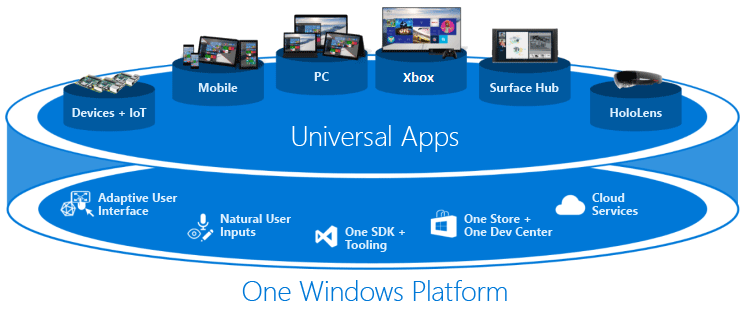.NET 5 – what does it mean for developers and users? Part I – the background
Contrary to his predecessor, Satya Nadella is known for his good relations with the developers. Getting close to the Open Source and Linux communities, sharing free versions of i.a. Visual Studio and the Xamarin acquired in 2016, and the opening of WPF or Windows Forms, received warm reception. The true revolution however, is yet to come.
.NET Framework + .NET Core = .NET 5
For years, one of the most often postulated suggestions by the .NET software development programmers, has been the unification of the frameworks, formerly developed as separate. During the last Build conference, the Microsoft representatives confirmed, that the voice of the community shall finally be heard, and the unification will commence already in 2020. .NET 5, as that will be the unified name of the framework, will be a new opening, it will provide the programmers with a unified and consolidated work flow regardless of the software created, and the target devices and operating systems.
Before we get into details, one should mention, that Microsoft had already promised a similar merge, finding the common denominator for as much platforms as possible. The denominator was supposed to be the Universal Windows Platform. Microsoft promised that Windows would become a modular operating system that, that would be launched on PCs, smart phones, augmented reality goggles, consoles, or even Internet of Things devices. The programmers were provided with bridges (i.a. Project Centennial), due to which the „traditional” Win32 programs were to be easily ported to UWP.

That way, the Microsoft Store would provide thousands of well known and enjoyable Windows software, due to the scalable and adaptive UWP interfaces, managed comfortably on smart phones, tablets, laptops, or augmented reality. However, facing reality was particularly painful for Microsoft. It took but one pillar of the Universal Windows Platform, i.e. the mobile Windows, for the entire plan to go to hell. The Windows 10 convergence had become irrational without Windows 10 on mobile devices, particularly smart phones.
Why would it work this time?
At the time, Android was competition for Microsoft rather than proving grounds. Often, among the reasons of the failure of the original premises of the Universal Windows Platform, one would name the weak relations with the developers and the resulting lack of software in the Microsoft Store. The solution based on bridges and porting has never met the expected interest, and the concept of „one Windows on all devices” was never accomplished successfully. However, Microsoft has not said its final word. One cannot shake off the feeling, that the .NET 5 announcements prove to be a new opening.

This time, by connecting .NET Framework and .NET Core in .NET 5, Microsoft seems to dedicate much attention and assets to issues that have been omitted for years. First, Microsoft listened to the people who create .NET software. Second, Microsoft made providing the proper tools to the software creators, and not the end users, the actual priority. Formerly, Windows was universal; this time the developer tools or programming environments will be universal. Substantial data poinst to a fact, that the unification accomplished by .NET 5 has a good chance of success.
The important fact is that Microsoft is in control of much more effective tools, than during the launch of the Universal Windows Platform. Suffice to say the already mentioned WPF/Windows Forms, the growing and increasingly profitable Azure services, or the Visual Studio Code also available in the free version of Community, which reaches peaks of popularity. However, the integration of the environments, platforms and the development direction in the upcoming era of .NET 5 will be examined in another article…
Author:
Mikołaj Juśkiewicz
Senior .NET Developer




